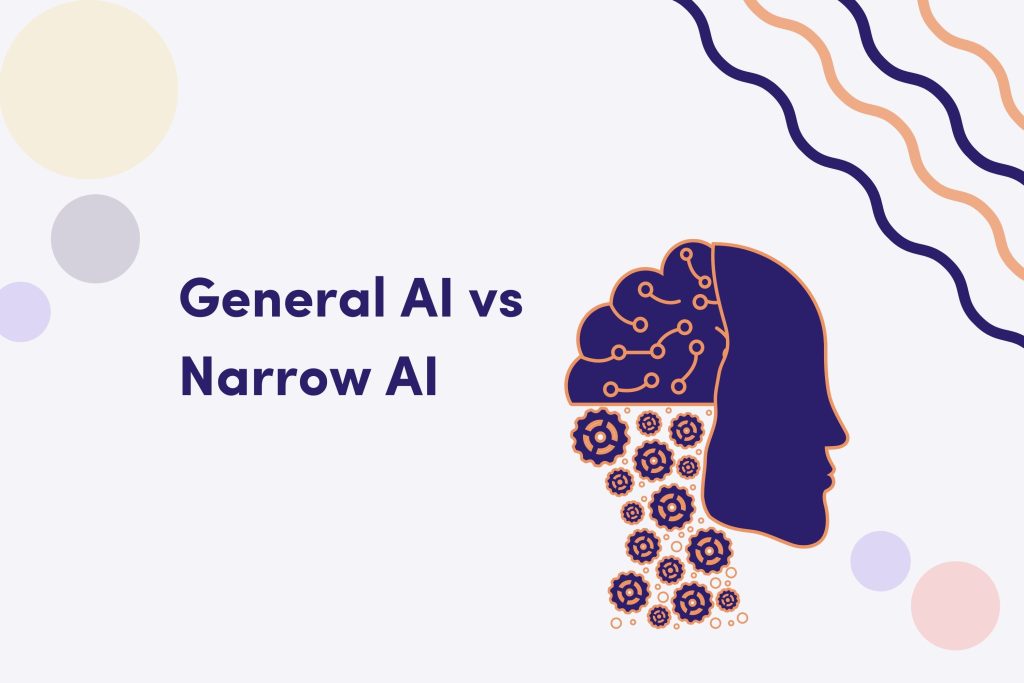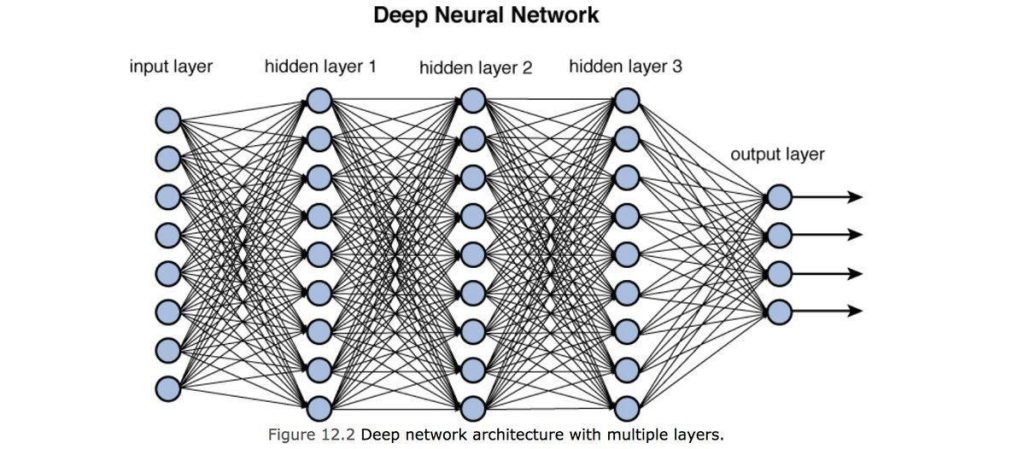Introduction
Artificial Intelligence (AI) has become a buzzword in today’s technological landscape, shaping the future of various industries and revolutionizing the way we live and work. This deep dive aims to explore the intricate world of AI, delving into its history, evolution, and the fundamental concepts that underpin its existence.
Background
To comprehend the significance of Artificial Intelligence it is crucial to understand its roots and the journey it has undertaken to reach its current state. The background section of this deep dive will provide a historical context, tracing the origins of AI and highlighting key milestones that have shaped its development.
Artificial Intelligence dates back to ancient times when philosophers and mathematicians pondered the concept of creating machines with human-like intelligence. However, the formal birth of AI can be traced to the mid-20th century when pioneers like Alan Turing and John McCarthy laid the theoretical foundations for the field. The background section will explore these early endeavors and how they set the stage for the AI revolution we are witnessing today.
Purpose of the Deep Dive

Why delve into the world of Artificial Intelligence? The purpose of this deep dive is multifaceted. First and foremost, it aims to demystify the complex realm of AI for the general audience, providing a comprehensive understanding of its principles and applications. Furthermore, by exploring the historical context and evolution, we gain insights into the challenges and breakthroughs that have shaped AI’s trajectory.
Additionally, as AI becomes increasingly integrated into our daily lives, understanding its nuances becomes essential for informed decision-making and ethical considerations. This deep dive seeks to empower readers with the knowledge needed to navigate the evolving landscape of AI responsibly.
Understanding Artificial Intelligence
Definition and Basics
At its core, what is Artificial Intelligence? This section will provide a comprehensive definition, breaking down the fundamental concepts that define AI. AI refers to the development of computer systems that can perform tasks that typically require human intelligence. These tasks include learning, reasoning, problem-solving, perception, and language understanding.
The basics of AI encompass various subfields, including machine learning, natural language processing, computer vision, and robotics. Machine learning, a subset of AI, empowers systems to learn and improve from experience without explicit programming. Natural language processing enables machines to understand, interpret, and generate human language, while computer vision allows them to interpret and make decisions based on visual data.
Historical Evolution

The journey of AI from theoretical concepts to practical applications is marked by significant milestones. This section will take a closer look at the historical evolution of AI, exploring key moments that have defined its trajectory.
The 1950s saw the birth of AI as an academic discipline, with Alan Turing proposing the famous Turing Test to determine a machine’s ability to exhibit human-like intelligence. Following this, the Dartmouth Conference in 1956 is often regarded as the starting point for AI research, where the term “artificial intelligence” was coined. Over the next few decades, AI research experienced both periods of optimism and skepticism, with breakthroughs in expert systems, rule-based programming, and symbolic reasoning.
The 1990s brought a shift towards statistical and probabilistic approaches, marking the rise of machine learning as a dominant paradigm. With the advent of powerful computing resources and vast datasets, machine learning algorithms, particularly neural networks, gained prominence. This led to remarkable advancements in areas such as image recognition, natural language processing, and speech recognition.
Types of AI: Narrow vs. General

Not all AI systems are created equal. This section will explore the two main types of AI: Narrow (or Weak) AI and General (or Strong) AI.
Narrow AI is designed to perform a specific task or a set of tasks, exhibiting intelligence only within the confines of those predefined functions. Examples include virtual personal assistants like Siri and Alexa, recommendation algorithms, and image recognition systems. While these systems excel in their designated domains, they lack the broad cognitive abilities associated with human intelligence.
On the other hand, General AI represents a more advanced form of artificial intelligence that possesses the ability to understand, learn, and apply knowledge across diverse domains. General AI aims to mimic the broad cognitive abilities of humans, allowing machines to adapt and perform tasks beyond their original programming. Achieving General AI remains a complex challenge, and current AI systems are predominantly of the Narrow AI variety.
The Building Blocks of AI
Machine Learning
At the core of AI lies Machine Learning (ML), a paradigm that empowers machines to learn from data and improve their performance over time. ML algorithms come in various flavors, each serving specific purposes in the quest for artificial intelligence.
Supervised Learning

Supervised Learning is akin to a guided learning process, where the algorithm is trained on a labeled dataset. The model makes predictions or decisions based on input data, and the algorithm is corrected when its predictions deviate from the actual outcomes. This form of learning is prevalent in tasks such as image recognition and spam detection.
Unsupervised Learning
Unsupervised Learning, on the other hand, operates without labeled data. The algorithm explores the inherent structure within the data, identifying patterns and relationships autonomously. Clustering and dimensionality reduction are common applications of unsupervised learning, fostering discoveries in areas such as customer segmentation and anomaly detection.
Reinforcement Learning
Reinforcement Learning takes inspiration from behavioral psychology, allowing machines to make decisions through trial and error. Agents learn by interacting with an environment, receiving positive or negative feedback based on their actions. This learning approach is prevalent in gaming, robotics, and autonomous systems, where the AI learns optimal strategies through continuous exploration.
Neural Networks

Neural Networks are the backbone of many advanced AI systems, mimicking the structure and functioning of the human brain. These networks consist of interconnected nodes, or neurons, organized in layers. The interconnections have weights that are adjusted during the training process, enabling the network to learn and adapt.
Structure and Function
Understanding the structure of Neural Networks is crucial for comprehending their capabilities. Input layers receive data, hidden layers process information, and output layers produce the final results. The activation function within neurons determines the output based on the weighted inputs. Deep Neural Networks, with multiple hidden layers, have demonstrated exceptional capabilities in handling complex tasks.
Deep Learning

Deep Learning represents a subset of machine learning, characterized by the use of deep neural networks. These networks excel at capturing intricate patterns and representations, making them ideal for tasks such as image recognition, natural language processing, and speech recognition. The depth of these networks contributes to their ability to abstract and understand hierarchical features in data.
AI in Action
With the foundational knowledge of AI, we transition into its diverse applications across various industries.
Applications Across Industries
Healthcare

In healthcare AI is a game-changer, offering solutions from diagnostics to personalized treatment plans. Machine learning algorithms analyze medical images, identify anomalies, and assist in early disease detection. Natural Language Processing (NLP) aids in extracting valuable insights from vast volumes of medical literature, facilitating advancements in research and clinical decision-making.
Finance
The financial sector benefits significantly from AI applications, with algorithms powering fraud detection, risk management, and investment strategies. Machine learning models analyze market trends and patterns, providing insights to optimize investment portfolios. AI-driven chatbots enhance customer service, providing real-time assistance and streamlining financial transactions.
Manufacturing

In manufacturing AI optimizes production processes, minimizes downtime, and ensures quality control. Robotics equipped with AI algorithms enhance automation, handling intricate tasks with precision. Predictive maintenance models use machine learning to anticipate equipment failures, reducing unplanned downtime and enhancing overall efficiency.
Real-world Examples
Natural Language Processing
Natural Language Processing enables machines to understand, interpret, and generate human language. This technology powers virtual assistants, language translation services, and sentiment analysis. Chatbots, equipped with NLP capabilities, enhance customer interactions, providing personalized and context-aware responses.
Computer Vision

Computer Vision enables machines to interpret and understand visual information, revolutionizing industries such as autonomous vehicles, healthcare imaging, and surveillance systems. Facial recognition systems enhance security measures, while image recognition technology assists in inventory management and defect detection in manufacturing processes.
As we witness these applications in action, it becomes evident that AI is not a distant, futuristic concept but a transformative force actively shaping the present and the future.
Challenges and Considerations

While AI holds immense potential, it is not without challenges and ethical considerations.
Bias and Fairness
Machine learning models are only as unbiased as the data on which they are trained. Biases present in training data can lead to discriminatory outcomes, reinforcing existing societal prejudices. Ensuring fairness and mitigating bias in AI algorithms is a critical aspect of responsible AI development.
Explainability and Transparency
The opacity of some AI models raises concerns about their decision-making processes. Understanding and interpreting AI decisions is vital, especially in fields like healthcare and finance, where transparency is essential for building trust and accountability.
Ethical Use of AI
AI technologies have the potential to impact society profoundly. Establishing ethical guidelines and standards for the development and deployment of AI is crucial to prevent misuse and ensure that these technologies align with human values.
Ethical Considerations in AI
Bias and Fairness

One of the primary ethical concerns in AI is the issue of bias and fairness. As machine learning algorithms are trained on vast datasets, they can inadvertently inherit and perpetuate societal biases present in the data. This bias can manifest in various forms, such as gender, race, or socioeconomic status, leading to discriminatory outcomes. Recognizing and mitigating bias in AI systems is essential to ensure fair and equitable treatment for all users.
Researchers and developers are actively working to implement fairness-aware machine learning techniques, aiming to identify and eliminate biased patterns in the data. Additionally, organizations are adopting ethical guidelines that prioritize fairness, emphasizing the need for diverse and representative datasets. Collaborative efforts between technologists, ethicists, and policymakers are crucial to developing comprehensive solutions that address bias and promote fairness in AI applications.
Accountability and Transparency
As AI systems become more sophisticated, understanding their decision-making processes becomes increasingly complex. Lack of transparency raises concerns about accountability when AI systems make errors or exhibit unintended behavior. Establishing clear accountability frameworks is essential to ensure that responsibility is assigned appropriately when AI systems are involved in critical tasks, such as healthcare diagnosis, autonomous vehicles, or financial decision-making.
Transparency in AI refers to the openness of algorithms and the ability to explain their decisions to users. Efforts are underway to develop explainable AI (XAI) techniques, allowing users to comprehend the reasoning behind AI-generated outcomes. Transparency not only enhances accountability but also fosters trust between users and AI systems. Striking the right balance between transparency and protecting proprietary algorithms is an ongoing challenge, requiring collaboration between industry stakeholders and regulatory bodies.
Privacy Concerns

AI applications often involve the processing of vast amounts of personal data, raising significant privacy concerns. From facial recognition systems to predictive analytics, the collection and analysis of personal information can infringe upon individuals’ privacy rights. Safeguarding user data and ensuring responsible data usage are critical considerations in the development and deployment of AI technologies.
Data anonymization, encryption, and robust security measures are essential components of addressing privacy concerns in AI. Stricter regulations, such as the General Data Protection Regulation (GDPR), aim to protect individuals’ privacy rights and hold organizations accountable for responsible data handling. As AI continues to advance, ongoing efforts are required to establish and enforce ethical standards that prioritize user privacy without hindering technological innovation.
Challenges and Future Prospects
Current Challenges in AI Development

Despite the rapid progress in AI, several challenges persist in its development. One major challenge is the need for massive amounts of labeled data to train machine learning models effectively. Acquiring and annotating such datasets can be time-consuming and expensive, limiting the accessibility of AI technologies to smaller organizations and researchers.
Another challenge lies in the interpretability of complex AI models. Deep learning models, in particular, are often considered “black boxes” due to their intricate architectures, making it difficult to understand their decision-making processes. Researchers are actively working on developing interpretable AI models, allowing users to gain insights into how the system arrives at specific conclusions.
Ethical considerations, including bias and fairness, also pose ongoing challenges. Striking a balance between innovation and ethical responsibility requires a collaborative effort from the AI community, policymakers, and society at large. As AI applications become more widespread, addressing these challenges becomes paramount to ensuring the responsible development and deployment of intelligent systems.
Anticipated Technological Advances
The future of AI holds exciting possibilities with anticipated technological advances that can further enhance its capabilities. One area of focus is the development of more robust and efficient machine learning algorithms. Researchers are exploring novel architectures and techniques, including reinforcement learning and transfer learning, to improve the efficiency of AI systems and reduce their reliance on extensive labeled datasets.
Advancements in natural language processing (NLP) are poised to revolutionize human-computer interactions. Improved language models, capable of understanding context and nuance, can enhance virtual assistants, translation services, and other language-dependent applications. This progress is crucial for bridging the communication gap between humans and machines, making AI systems more intuitive and user-friendly.
The integration of AI with other emerging technologies, such as the Internet of Things (IoT) and 5G connectivity, holds immense potential. Smart cities, healthcare innovations, and autonomous systems can benefit from the synergy between AI and these technologies. However, this integration also raises concerns about security, data privacy, and the ethical implications of interconnected intelligent systems.
Societal Impact and Adaptation

As AI technologies become more prevalent, their impact on society becomes increasingly profound. Job displacement due to automation is a significant concern, requiring proactive measures to retrain and upskill the workforce. Collaboration between industry, academia, and policymakers is essential to develop education and training programs that prepare individuals for the evolving job market.
The societal implications of AI extend beyond the workforce to areas such as healthcare, education, and accessibility. AI-powered medical diagnostics can improve patient outcomes, while personalized learning platforms can enhance educational experiences. However, ensuring equitable access to these advancements and addressing potential disparities is crucial for a socially responsible AI landscape.
Adapting legal and regulatory frameworks to accommodate the evolving nature of AI is an ongoing challenge. Policymakers need to strike a balance between fostering innovation and safeguarding societal interests. International collaboration is essential to develop standardized regulations that address the global implications of AI, ensuring a harmonious coexistence between humans and intelligent machines.
Emerging Trends in AI Research
Quantum Computing and AI

One of the most promising frontiers in AI research is the intersection with quantum computing. Traditional computers operate on bits, representing either a 0 or a 1. Quantum computers leverage qubits, which can exist in multiple states simultaneously, exponentially increasing computing power. This opens up new possibilities for solving complex problems, such as optimizing machine learning algorithms and cryptography.
Quantum machine learning (QML) is an exciting subfield where AI algorithms harness the power of quantum computing. Researchers are exploring ways to enhance machine learning models, making them more efficient and capable of handling vast datasets. As quantum computing technology advances, the potential for groundbreaking AI applications grows exponentially.
Explainable AI
The opaqueness of some AI models has raised concerns about their decision-making processes, especially in critical areas like healthcare and finance. Explainable AI (XAI) addresses this issue by developing models that can provide clear, understandable explanations for their outputs.
Researchers are focusing on creating AI systems that not only deliver accurate results but also offer insights into how they reached those conclusions. This transparency is crucial for building trust in AI applications, ensuring accountability, and facilitating broader adoption across various industries. The integration of XAI principles into AI development is a step towards demystifying the black box of artificial intelligence.
AI in Autonomous Systems
Autonomous systems, such as self-driving cars and drones, rely heavily on AI for decision-making and navigation. The continual advancement of AI algorithms enhances the capabilities of these systems, making them more adept at handling complex real-world scenarios.
AI-powered autonomous systems are not only transforming transportation but also finding applications in areas like agriculture, surveillance, and disaster response. As researchers push the boundaries of AI in autonomy, the potential for creating safer, more efficient, and adaptive systems continues to grow.
The Human-AI Collaboration

Augmented Intelligence
The synergy between humans and AI, known as augmented intelligence, represents a paradigm shift in how we approach problem-solving and decision-making. Augmented intelligence leverages the strengths of both humans and machines, creating a collaborative environment where each complements the other’s capabilities.
In healthcare, for example, AI algorithms assist medical professionals in diagnosing diseases by analyzing medical images and data. The combination of human expertise and AI’s analytical power leads to more accurate and timely diagnoses, ultimately improving patient outcomes. Augmented intelligence is breaking down silos across various industries, unlocking new possibilities and reshaping the future of work.
Human-Centric Design
The success of AI applications depends on how well they align with human needs, preferences, and ethical considerations. Human-centric design in AI focuses on creating systems that prioritize user experience, inclusivity, and ethical guidelines.
Developers and designers are increasingly incorporating human-centric principles into the development of AI interfaces, ensuring that users can interact with these systems seamlessly. Ethical considerations, such as bias mitigation and privacy preservation, are integral to human-centric design, fostering responsible AI development and deployment.
The Future of Human-AI Interaction

As AI becomes more integrated into our daily lives, the nature of our interactions with these systems is evolving. The future holds the promise of more natural and intuitive interfaces, enabling users to communicate with AI in ways that feel familiar and effortless.
Advancements in natural language processing, gesture recognition, and emotion detection are shaping the next generation of human-AI interaction. This evolution is not only enhancing user experiences but also broadening the scope of applications across industries, from virtual assistants to educational tools.
Conclusion
The landscape of artificial intelligence is a dynamic and ever-expanding realm, with emerging trends shaping the future of technology and human interaction. Quantum computing is pushing the boundaries of computational power, while explainable AI is ensuring transparency and accountability in decision-making processes. Autonomous systems are becoming increasingly sophisticated, promising a revolution in various sectors.
The collaborative partnership between humans and AI, characterized by augmented intelligence and human-centric design, is redefining how we approach challenges. The future of human-AI interaction holds the potential for seamless integration into our daily lives, with intuitive interfaces and ethical considerations at the forefront.
As we navigate this exciting era of machine minds, it is crucial to approach AI development and deployment with a mindful perspective. Balancing innovation with ethical considerations ensures that artificial intelligence continues to benefit society, augmenting human capabilities and reshaping the way we perceive and interact with the world. The ongoing dialogue between human ingenuity and machine intelligence will undoubtedly shape the trajectory of technology and define the future landscape of artificial intelligence.
frequently asked questions (FAQs)
What is Artificial Intelligence (AI)?
Artificial Intelligence refers to the development of computer systems that can perform tasks that typically require human intelligence, such as learning, reasoning, problem-solving, perception, and language understanding.
How does AI differ from traditional programming?
In traditional programming, explicit instructions are provided to solve a specific problem. In AI, machine learning algorithms enable systems to learn and improve from experience without being explicitly programmed, allowing for adaptability and self-improvement.
What are the main subfields of AI?
The main subfields of AI include machine learning, natural language processing, computer vision, robotics, and expert systems. Each subfield focuses on different aspects of mimicking human intelligence.
What is the historical background of Artificial Intelligence?
The concept of AI has ancient roots, but the formal birth can be traced to the mid-20th century. Pioneers like Alan Turing and John McCarthy laid the theoretical foundations, and the Dartmouth Conference in 1956 marked the start of AI as an academic discipline.
What are the types of AI?
There are two main types of AI: Narrow (or Weak) AI and General (or Strong) AI. Narrow AI is designed for specific tasks, while General AI aims to possess broad cognitive abilities similar to humans. Currently, most AI applications are Narrow AI.
How does machine learning contribute to AI?
Machine learning is a subset of AI that enables systems to learn from data and improve their performance over time without being explicitly programmed. It plays a crucial role in tasks like image recognition, natural language processing, and recommendation systems.
Can AI systems understand human language?
Yes, natural language processing (NLP) is a subfield of AI that enables machines to understand, interpret, and generate human language. Virtual personal assistants like Siri and Alexa are examples of NLP applications.
What are the ethical considerations surrounding AI?
Ethical considerations in AI include concerns about bias in algorithms, job displacement due to automation, privacy issues, and the potential misuse of AI in various domains. Responsible development and deployment of AI are crucial to address these concerns.